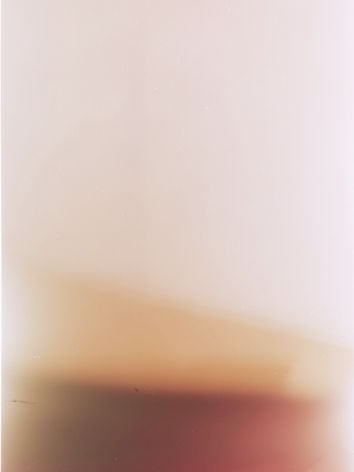A SELECTION OF IMAGES FROM
THE ALLOTMENT GARDEN
Space/Politics/Economy/Landscape (1830-Present)
SOPHIE CHAMBERLAIN
Author's own images made with pinhole cameras, 2020.
The COVID-19 pandemic underscored the much-reported sense of dislocation felt in many urban communities. Likewise the newly imposed spatial conditions drew attention to a community which found themselves exempt due to their existing partitions, and whom, may find it difficult to survive in the city otherwise - the occupiers and users of the allotment garden. A place for private conversation, time and space away from family and the impulse to slow down, to repair and recuperate rather than intensify productivity – it was these kinds of conduct and the possibility that occupants, users and the sites spatial quality might lead to a more insightful debate necessary for defying any unidirectional flow that our current food system provides, that an engagement with the allotment became most preoccupied.
The overall objective of this dissertation was to identify, understand and document a location in the urban landscape by creating images and dialogue with those who currently engage in urban gardening practices. Pinhole cameras were made by upcycling cardboard waste from various major supermarkets with pieces of negative film cut and loaded into the camera the evening prior to visiting the site. These pieces of film intersect throughout the work with discussions held by those currently occupying the site and are inserted into the text, when the occupiers voice is referenced. At each partition, the camera remained in place, exposing while the occupant worked the plot, allowing each point on site to be concentrated into a durational framework. The colour cast let loose across the film follows a seasonal trajectory from the months April to August, we don’t see the images here in seasonal order nor do we see them as linearly organised, more so as aids for disrupting the conventional terms of landscape and to forge alternatives to those passive forms of representation that often fail to document the spatial and material complexities of urban locations. Each piece of negative film cumulatively builds a spatial assemblage of the site from which we can weave together to form an index of land use and thus conceive of a wider picture of the landscape.
[1] For many at Garratt Park allotment site, the ability to visit and continue nurturing their gardens was a lifeline, as one gardener said, “Um, and I think it’s saved a lot of loneliness, actually.”
Copyright of images: © Sophie Chamberlain










